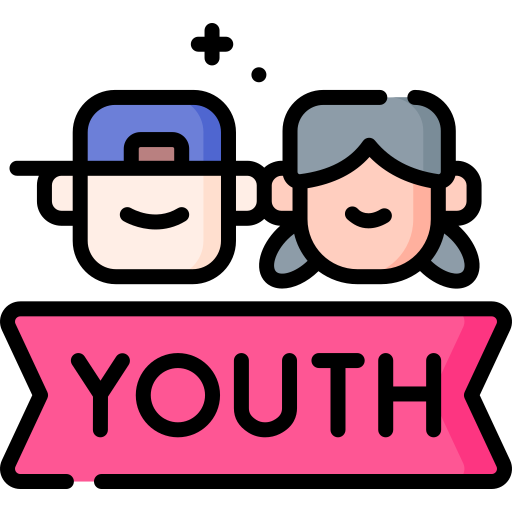Table of Contents
ToggleIntroduction
Calisthenics for Beginners: 25 Simple Exercises to Get Started So you want to learn about calisthenics for beginners? Great choice! Picture this: you’re working out anywhere—home, park, even the living room—with no equipment whatsoever and still getting ripped. Calisthenics is all about making your body your gym. Want to get muscle, lose fat, or just get active? This is where to begin. It’s easy, versatile, and oddly enjoyable. In this guide, you’ll learn 25 beginner-friendly exercises, how to plan your workouts, and how to stay motivated. Let’s turn your body into a powerhouse, one push-up at a time.
What is Calisthenics?
Calisthenics is strength training with the resistance of your own body weight. Push-ups, squats, planks—no machine, no weights, just you and gravity. Been around for centuries and even used by ancient Greek warriors. The simplicity and effectiveness of calisthenics is what makes it great.
Advantages of Calisthenics for Beginners
- No Equipment Needed: You are your own gym..
- Functional Strength:Train muscles in the manner you actually use them.
- Better Flexibility and Coordination: Movements use many joints and muscles.
- This Burns Calories and Tones: Start losing fat and gaining lean muscle.
- Do It Anywhere: Home, park, office—you name it.
- Scalable: Easy to start, easy to progress.
Getting Started with Calisthenics
Before you dive into push-ups, let’s get to the basics:
- Set Realistic Goals: Do to lose fat, gain muscle, or increase mobility? Stick to what you want
- Learn Body Mechanics: Prioritize good form over speed.
- Warming Up: Always warm up to prevent injuries.
Warm-Up Routine (Before Each Workout)
Warming up for just 5 minutes enhances performance and avoids injury.
- 🔹 Jumping Jacks – 30 seconds
- 🔹 Arm Circles – 15 forward, 15 backward
- 🔹 Leg Swings – 10 each leg
- 🔹 Neck Rotations – 10 slow rotations
25 Basic Calisthenics Exercises for Beginners (In Depth)
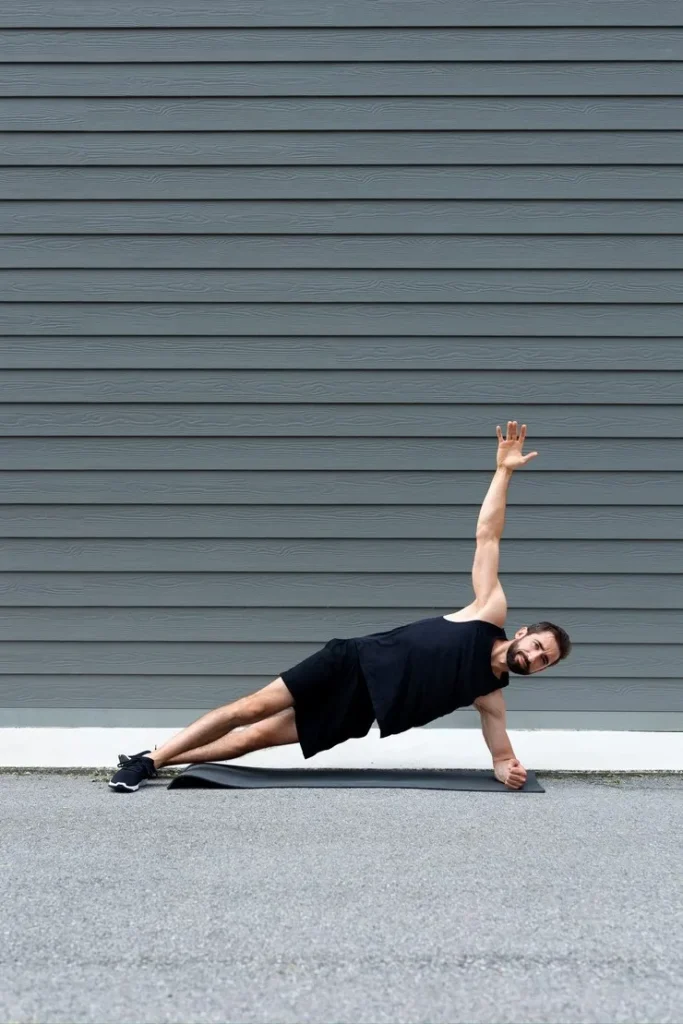
Beginners’ calisthenics doesn’t have to be scary. These 25 exercises are separated by target area—upper body, lower body, core, full body, and flexibility—to give you a solid, well-rounded foundation. Let’s take a closer look at each one and see how, why, and what they do for your body.
🔹 Upper Body Exercises
1. Push-Ups
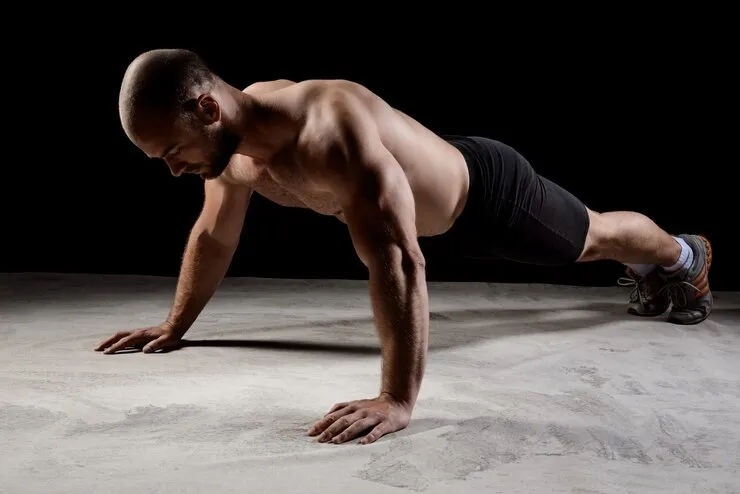
Muscles engaged: Chest, shoulders, triceps, core
How to do it:
- Start in a high plank position, hands shoulder-width apart.
- Lower your chest down towards the ground with elbows at a 45° angle.
- Push back up to starting position.
Why it’s great: It’s the ultimate bodyweight upper body exercise. Develops pressing strength and stability.
2. Wall Push-Ups

Muscles engaged: Same as standard push-ups, but lower intensity
How to do it:
- Stand in front of a wall, put hands on the wall at shoulder height.
- Bend elbows and lean your body against the wall, then push back.
Why it’s great: Perfect if you’re starting from scratch or have limited upper body strength.
3. Incline Push-Ups
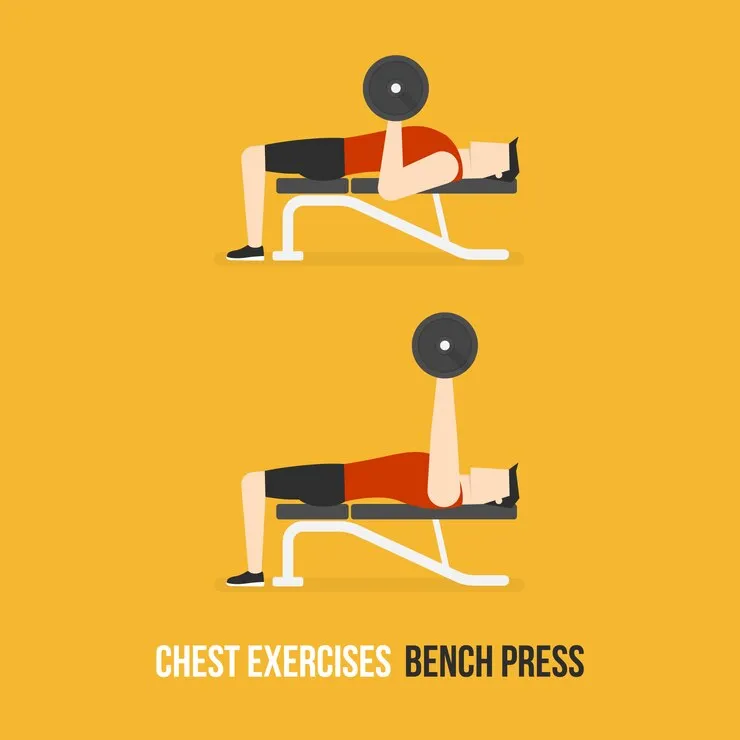
Muscles worked: Same as push-ups
How to do it:
- Place hands on a bench or sturdy surface.
- Keep your body straight and perform a push-up.
Why it’s great: Easier than floor push-ups and helps build strength gradually.
4. Dips on Chair

Muscles worked: Triceps, shoulders, chest
How to do it:
- Sit in a chair, put hands beside hips, slide off the seat.
- Dangle body by bending elbows, then stand up.
Why it’s great: Hits those pesky triceps, perfect for toning the back of your arms.
5. Arm Circles
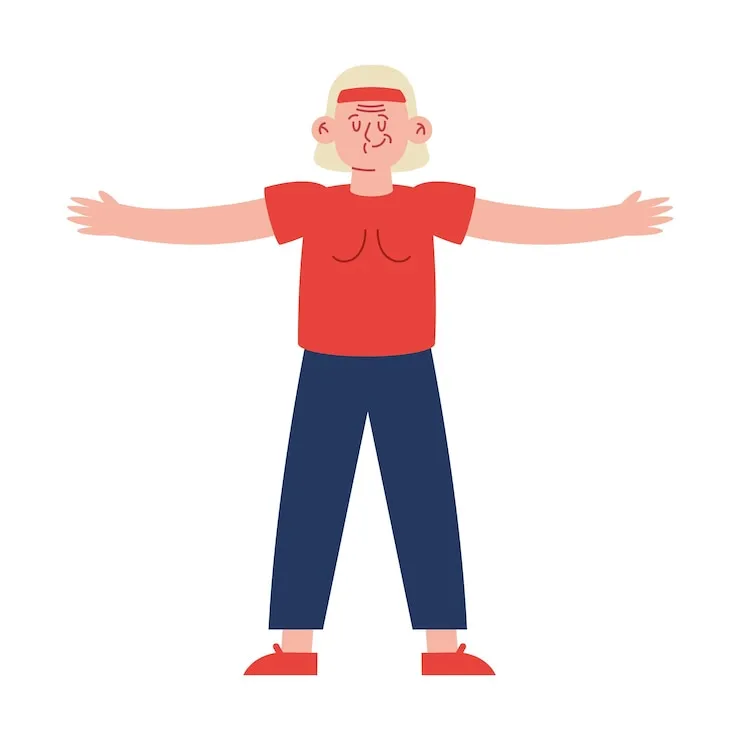
Muscles worked: Shoulders, arms
How to do it:
- Stand with feet shoulder-width apart, hold arms straight out to the sides.
- Make tiny circles forward for 30 seconds, then do the reverse.
Why it’s great: Great warm-up move, activates shoulders and improves blood flow.
🔹 Lower Body Exercises
6. Bodyweight Squats
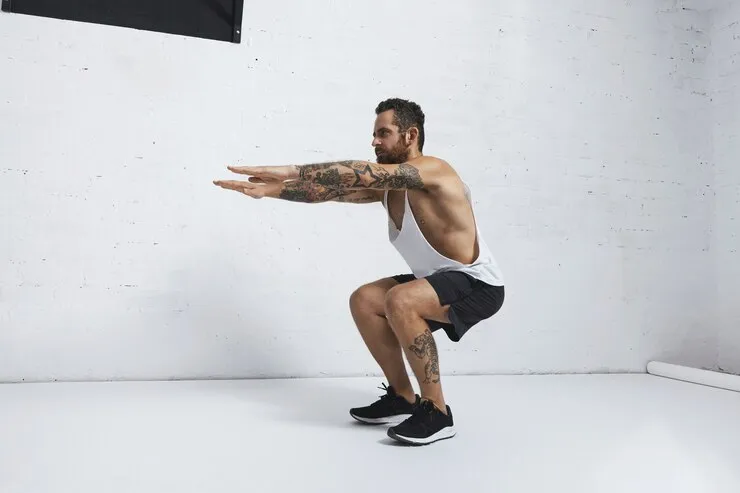
Muscles worked: Quads, hamstrings, glutes
How to do it:
- Stand with feet shoulder-width apart.
- Push hips back and bend knees as if sitting in a chair.
- Keep chest up, go as low as possible, then return to standing.
Why it’s great: Strengthens legs, burns fat, improves posture.
7. Wall Sits
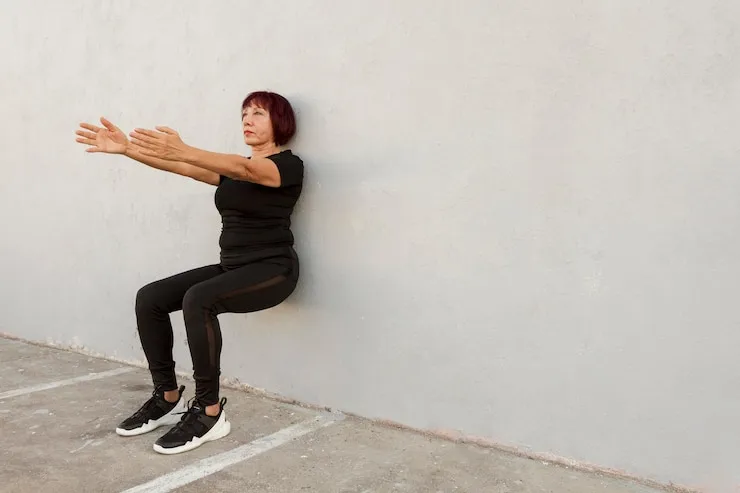
Muscles worked: Quads, glutes
How to do it:
- Lean against a wall, slide down so that knees are at 90°.
- Hold position for 20–60 seconds.
Why it’s great: Develops muscular endurance and mental toughness.
8. Lunges
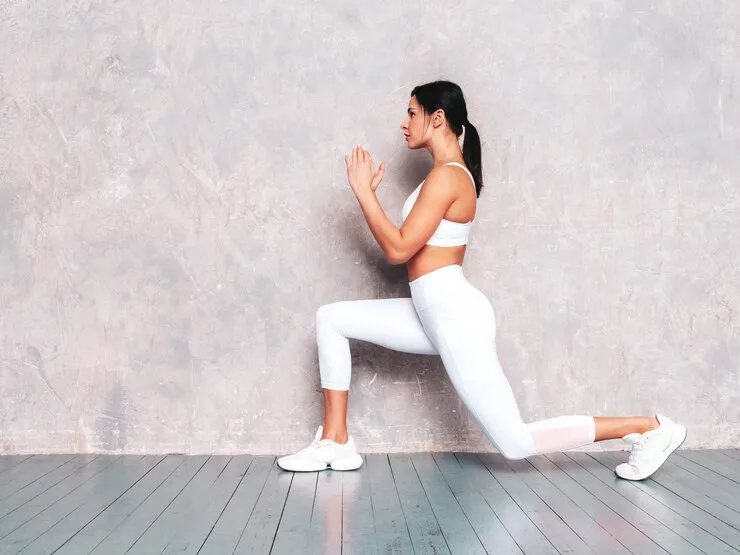
Muscles worked: Glutes, quads, hamstrings
How to do it:
- Step one foot in front of you, lower yourself until both knees are 90°.
- Push back to the starting point and switch legs.
Why it’s great: Improves balance, leg strength, and hip mobility.
9. Calf Raises
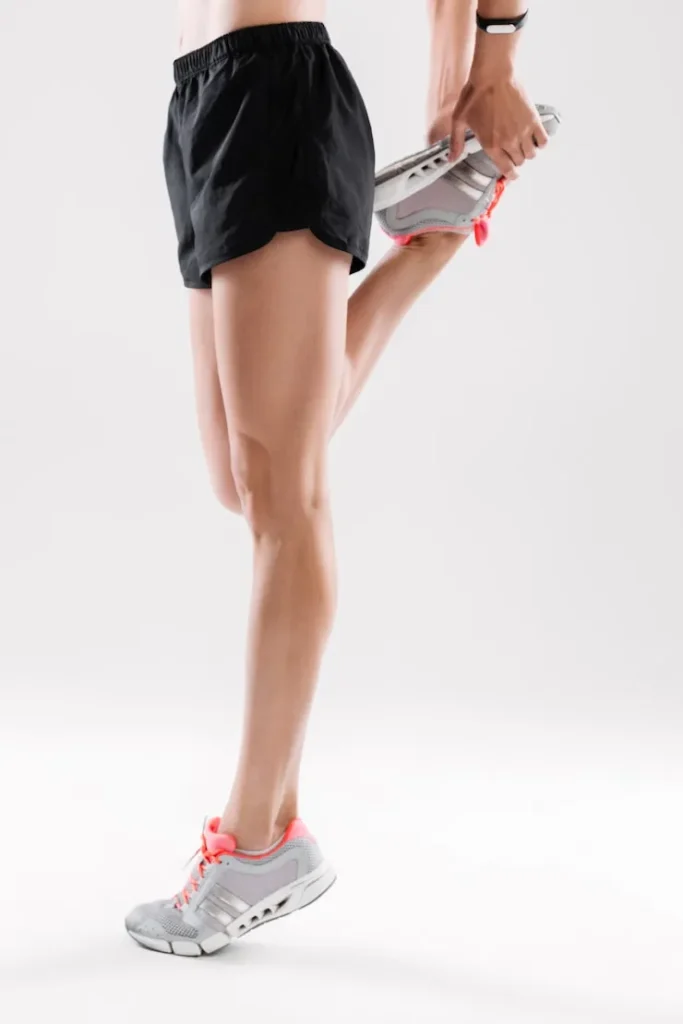
Muscles worked: Calves
How to do it:
- Stand on toes, hold top position briefly, then slowly lower down.
Why it’s great: Strengthens calves, enhances ankle stability and jumping ability.
10. Glute Bridges
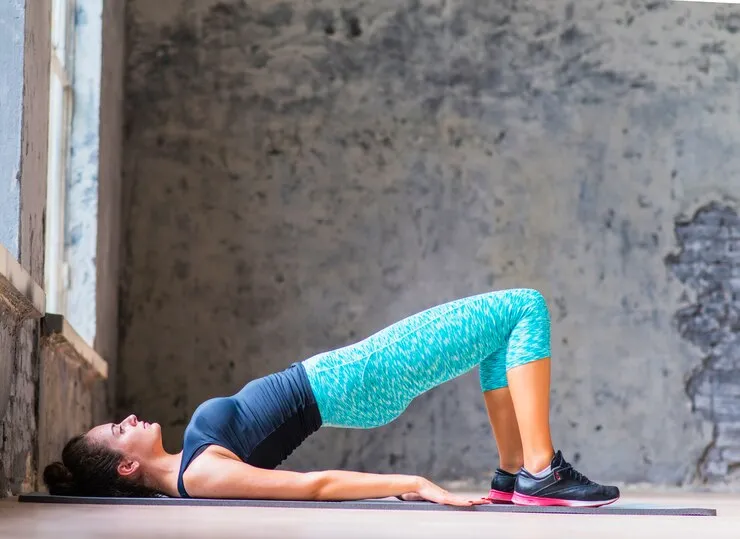
Muscles worked: Glutes, lower back
How to do it:
- Lie on your back, bend knees, feet flat.
- Lift hips towards ceiling, squeeze glutes, and slowly lower down.
Why it’s great: Great for backside strengthening and correcting posture.
🔹 Core Strength Exercises
11. Plank
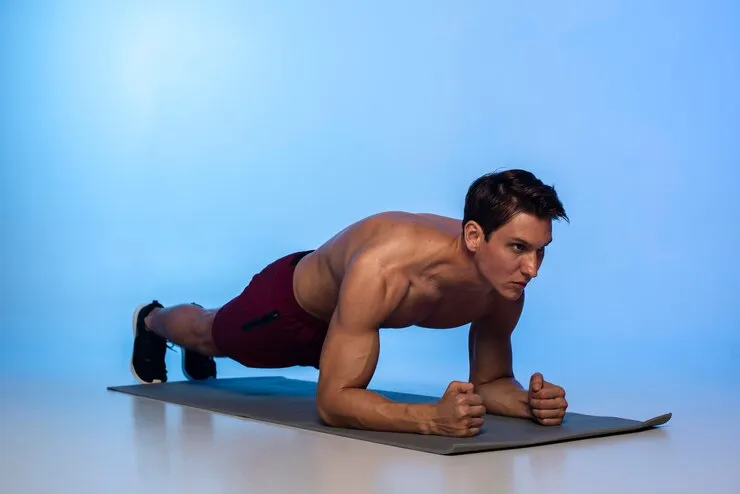
Muscles worked: Core, shoulders
How to do it:
- Forearms on the ground, legs straight.
- Keep body in straight line from head to heels.
Why it’s great: Targets deep core muscles and helps posture.
12. Side Plank
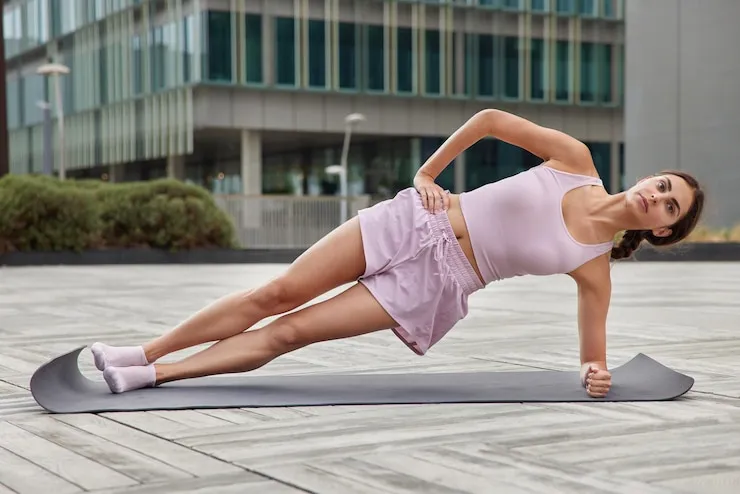
Muscles worked: Obliques, shoulders
How to do it:
- Lie on one side, elbow under shoulder.
- Lift hips and maintain a straight line.
Why it’s great: Sides of your core are strengthened, excellent for stability.
13. Sit-Ups
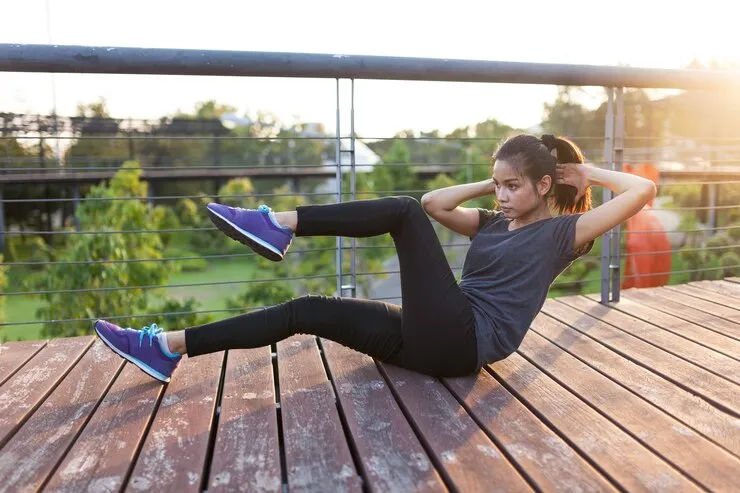
Muscles worked: Abdominals
How to do it:
- Lie on your back, knees bent.
- Use your abs to lift your upper body towards your knees.
Why it’s great: Classic ab exercise that still does the trick.
14. Bicycle Crunches
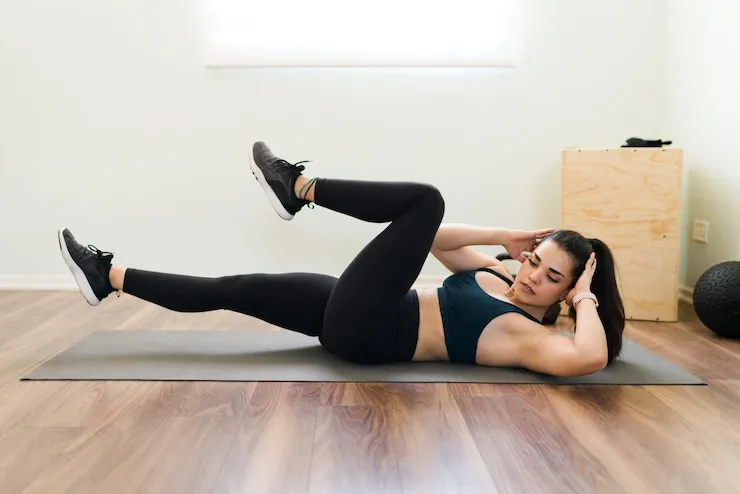
Muscles worked: Obliques, lower abs
How to do it:
- Lie down, lift legs, alternate touching opposite elbow to knee.
Why it’s great: Engages the entire core and enhances coordination.
15. Leg Raises
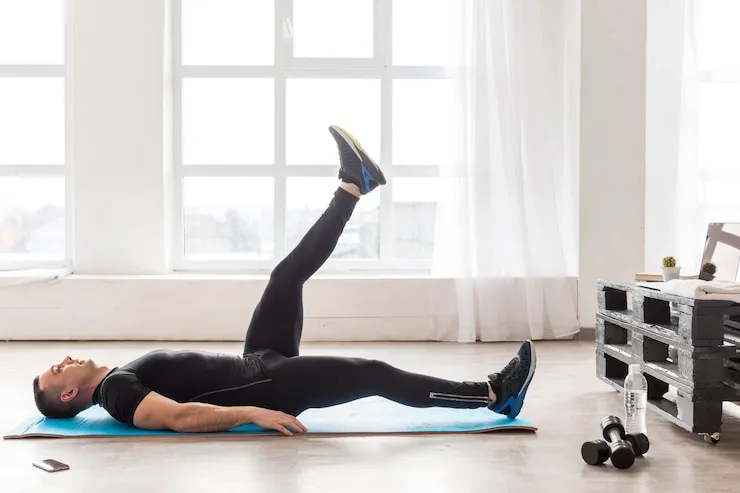
Muscles worked: Lower abs
How to do it:
- Lie on your back, legs straight.
- Lift legs towards the ceiling, lower slowly.
Why it’s great: Tough but efficient for building lower core strength.
🔹 Full Body Exercises
16. Burpees

Muscles worked: Entire body
How to do it:
- Squat, jump into plank, back to squat, jump up.
Why it’s great: Full-body cardio exercise that burns fat quickly.
17. Mountain Climbers

Muscles worked: Core, shoulders, legs
How to do it:
- In plank, run alternating knees to chest.
Why it’s great: Combines core strengthening with cardio.
18. Jump Squats
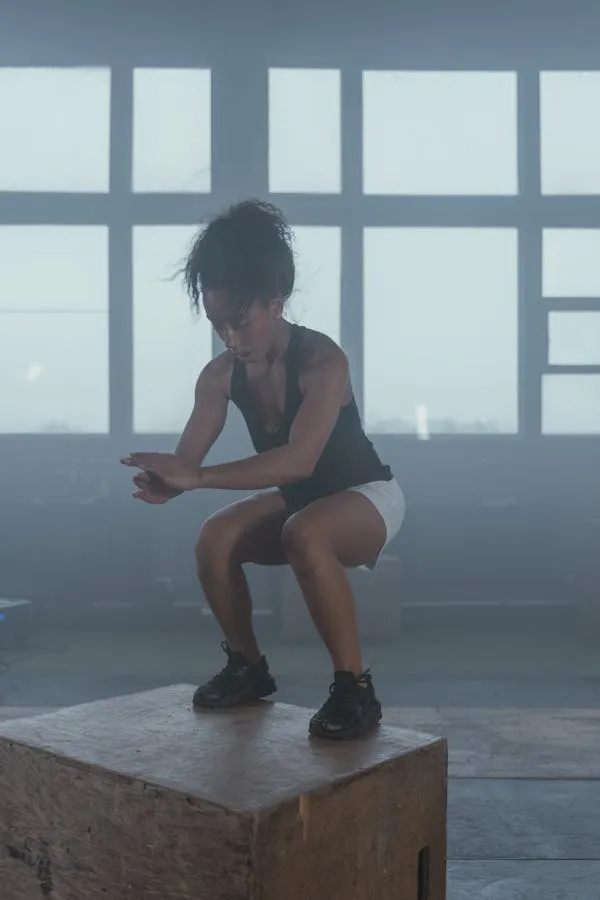
Muscles worked: Quads, glutes, calves
How to do it:
- Squat, then blast into a jump.
Why it’s great: Develops explosive strength and burns calories.
19. Bear Crawls
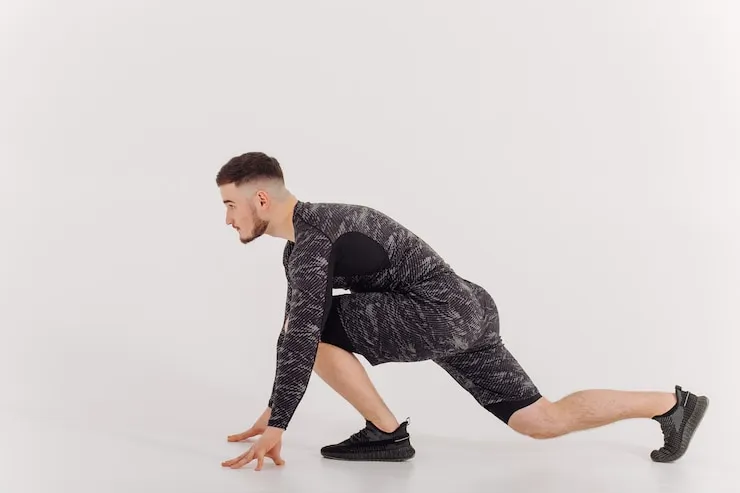
Muscles worked: Core, shoulders, legs
How to do it:
- On hands and feet, move forward and backward.
Why it’s great: Tests coordination, mobility, and overall-body strength.
20. High Knees
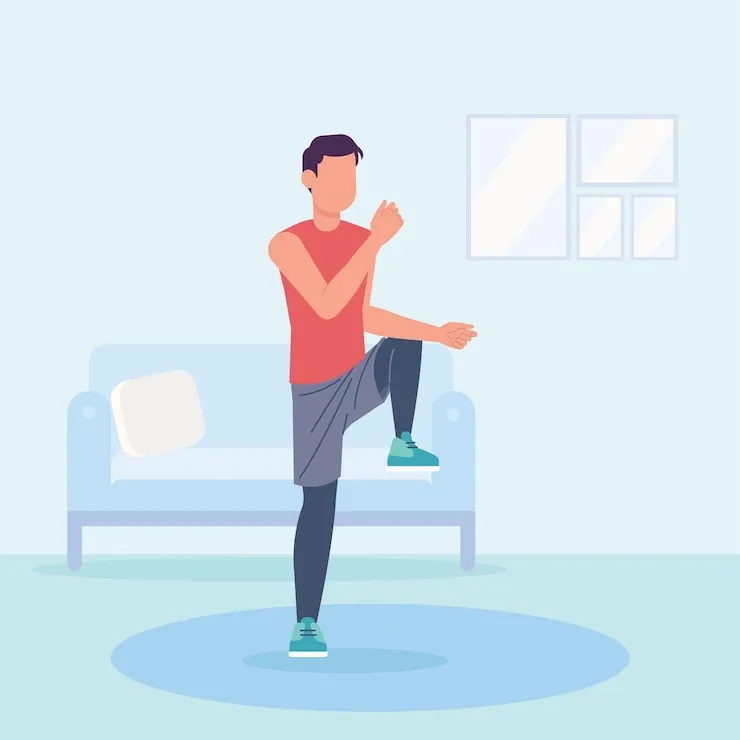
Muscles worked: Core, legs
How to do it:
- Run in place, bringing knees as high up as possible.
Why it’s great: Great cardio that engages core and legs.
🔹 Flexibility & Mobility Exercises
21. Forward Bend
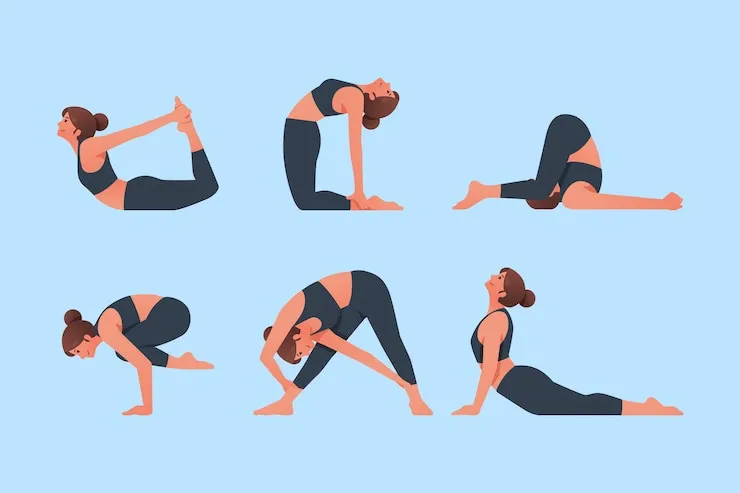
Muscles engaged: Hamstrings, lower back
How to do it:
- Stand tall, fold forward, reaching for your toes.
Why it’s great: Opens up hamstring and spine flexibility.
22. Cobra Stretch

Muscles engaged: Spine, abs
How to do it:
- Lie on stomach, hands under shoulders, lift chest up.
Why it’s great: Opens the chest and eases lower back tension.
23. Hip Circles
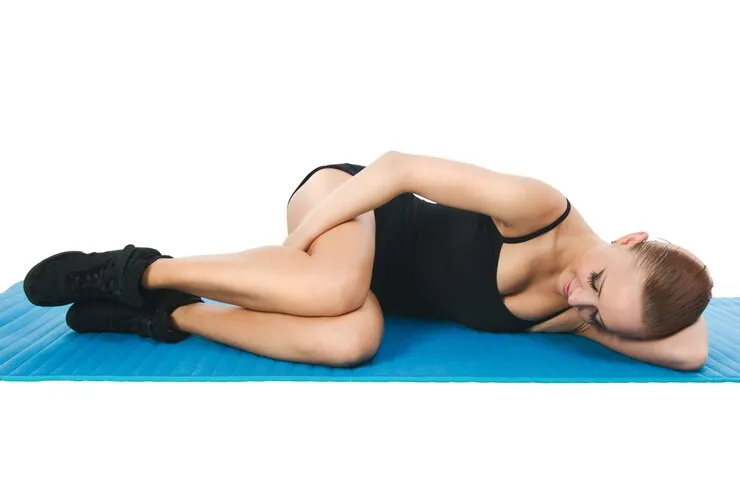
Muscles engaged: Hips
How to do it:
- Stand on one leg and circle the other leg in large circles.
Why it’s great: Engages the hips and balance.
24. Cat-Cow Stretch
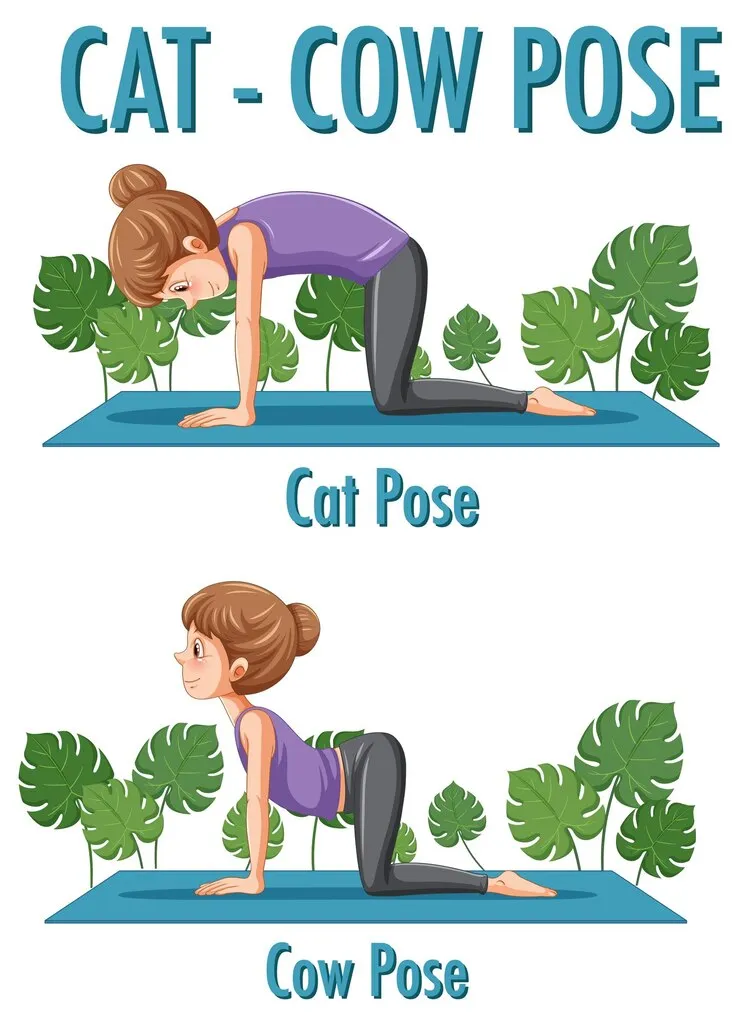
Muscles engaged: Spine, shoulders
How to do it:
- On hands and knees, alternate between arching and rounding of back.
Why it’s great: Wakens up the spine and eases stiffness.
25. Shoulder Rolls

Muscles engaged: Shoulders, traps
How to do it:
- Roll shoulders forward and backward in a circular motion.
Why it’s awesome: Relaxes tension and enhances upper body mobility.
Don’t forget to leave a review.
These beginner-friendly calisthenics exercises are easy to master, highly effective, and require no gym membership or fancy equipment—just your body and a willingness to move. Begin slowly, master the proper form, and progress gradually. Persistence is key. Recall that each rep matters and each small step makes a big difference. Press on!
Weekly Beginner Workout Plan
3-Day Split Example:
Day 1: Upper Body + Core
- Push-Ups – 3 sets of 10
- Dips – 3 sets of 8
- Plank – 30 seconds x 3
- Sit-Ups – 15 reps x 3
Day 2: Lower Body + Mobility
- Squats – 3 sets of 15
- Lunges – 10 each leg
- Glute Bridges – 3 sets of 12
- Forward Bend – Hold 30 seconds
Day 3: Full Body + Cardio
- Burpees – 10 reps x 3
- Bear Crawls – 30 seconds x 3
- Jump Squats – 15 reps x 2
- High Knees – 30 seconds
Tips for Staying Consistent
- ✅ Track Your Progress: Use an app or notebook
- ✅ Celebrate Small Wins: Did one extra push-up? That’s a win.
- ✅ Join a Community: Social support is a game-changer
- ✅ Mix It Up: Don’t get bored—try new moves
- ✅ Listen to Your Body: Rest when needed
Typical Mistakes to Steer Clear Of
- ❌ Skipping Warm-Up: Increases risk of injury
- ❌ Doing Too Much Too Soon:Results in burnout
- ❌ Not Paying Attention to Form: Quality > Quantity
- ❌ Not Resting Enough:Muscles grow during rest
- ❌ Comparing to Others: Mind your own journey
How to Progress Over Time
- ➕ Add reps
- ⏱ Slow down tempo
- 📈Attempt more challenging variations (e.g., diamond push-ups)
- 🧘 Incorporate mobility work
- 🧠 Remain mindful and intentional
Tools You Can Use (Optional)
If you’d like to add some flair:
- Pull-Up Bar: For higher-level upper-body exercises
- Resistance Bands: Make exercises harder without weights
- Parallettes:Enhance wrist comfort and increase range of motion
Nutrition Tips to Support Your Training
- 🥗 Protein: Eggs, chicken, tofu—aid muscle repair
- 💧Hydration: Water aids recovery
- 🚫 Limit Sugar: Empty calories hold you back
- 🍎 Whole Foods: Fuel your body for the best results
- 🕐 Meal Timing: Eat light before training
When to Expect Results
- 1 Week: Increased energy and better mood
- 1 Month: Noticeable strength gains
- 3 Months: Improved muscle tone and endurance
Stay patient—it’s a marathon, not a sprint.
📅 Sample Beginner Calisthenics Workout Plan
| Day | Focus | Example Exercises |
|---|---|---|
| Monday | Upper Body | Wall Push-Ups, Chair Dips, Incline Push-Ups |
| Tuesday | Lower Body | Squats, Lunges, Wall Sit |
| Wednesday | Rest or Light Stretching | Cat-Cow, Forward Fold |
| Thursday | Core + Cardio | Plank, Mountain Climbers, Sit-Ups |
| Friday | Full Body | Burpees, Bear Crawls, Jumping Jacks |
| Saturday | Mobility + Flexibility | Cobra Stretch, Shoulder Rolls |
| Sunday | Rest | Hydrate and stretch |
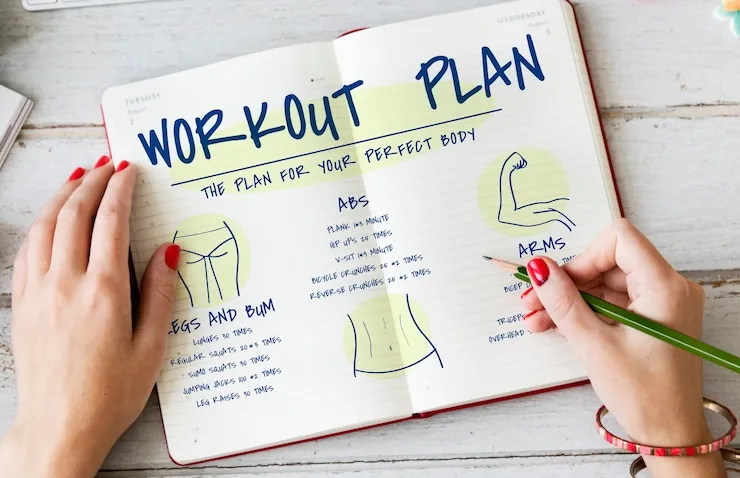
✅ Benefits of Calisthenics You’ll Notice Soon
- Improved mood and energy
- Better posture
- Strength gains without bulk
- Toned muscle
- More control and awareness in the body
💡 Pro Tips to Keep Progressing
- Increase Reps/Time Weekly: Small gains add up.
- Apply Progressions: Progress from wall push-ups → incline → standard.
- Mix It Up: Experiment with circuits, time-based sets, or challenges.
- Record Yourself: Monitor form and document progress.
- Don’t Skip Recovery: Sleep and stretching are also part of training.
🧠 Understanding the Basics of Calisthenics: What Makes It Unique
Calisthenics is not another fitness craze. It’s based in ancient Greek physical training and it’s still one of the most efficient and accessible means to build muscle and lose fat.
So, what makes it different?
- It’s Functional: Calisthenics conditions your body to move more efficiently in daily life.
- It’s Scalable: You can progress from beginners to advanced levels organically.
- It’s Natural: Utilizes bodyweight as opposed to artificial loads.
- It’s Holistic: Works your muscles, joints, tendons, balance, and mind.
🏗️ Building a Solid Foundation with Progressions
If you find an exercise too difficult — don’t give up. Every movement has a progression (an easier version) and a regression (a more difficult version).
Here’s how to progress some of the major exercises:
Push-Up Progression Example:
- Wall Push-Ups (easiest)
- Incline Push-Ups
- Knee Push-Ups
- Regular Push-Ups
- Decline Push-Ups
- Diamond Push-Ups
- Archer Push-Ups
- One-Arm Push-Ups (advanced)
Squat Progression Example:
- Assisted Squats (holding onto support)
- Bodyweight Squats
- Tempo Squats (warm down phase)
- Jump Squats
- Bulgarian Split Squats
- Pistol Squats (advanced)
This organization keeps it tough and enables you to advance at your own rate.
🛠️ How to Organize Your Own Calisthenics Workout
You can develop efficient routines with circuits, supersets, or interval training. Here’s an example beginner-friendly full-body circuit:
Perform each exercise for 30 seconds, rest for 15 seconds between exercises. Do 3 rounds.
- Jumping Jacks (warm-up)
- Incline Push-Ups
- Bodyweight Squats
- Chair Dips
- Russian Twists
- Mountain Climbers
- Plank (hold for 30 seconds)
Cool Down:
Stretch your hamstrings, quads, hips, chest, and shoulders for 5–10 minutes.
⚙️ Tools That Can Assist You Without Buying an Expensive Gym Membership
No equipment is necessary, but these low-priced tools can assist you:
- Resistance Bands – Wonderful for assisted pull-ups or additional tension.
- Pull-Up Bar –Doorway bars are inexpensive and multi-functional..
- Parallettes – Handy for push-ups, dips, and L-sits.
- Yoga Mat – For greater comfort during floor work.
- Timer App – To monitor sets and intervals.
🔄 How to Remain Motivated with Calisthenics
Face it — motivation wears off. Discipline remains. Follow these simple tips to remain on course:
- Set Weekly Goals: Eg, “3 push-ups in full by week-end.”
- Celebrate Small Wins: Did your initial plank last more than 1 minute? That’s a win.
- Monitor Your Progress: By journal or fitness app.
- Find a Buddy or Online Community: Community does matter.
- Switch Up the Environment: Train outside to mix things up.
🌱 Nutrition Hacks to Fuel Your Calisthenics Training
You can’t train harder than a poor diet. Feed your body for performance and recovery:
- Consume Protein: Opt for lean options such as chicken, tofu, lentils, or eggs.
- Hydrate: Particularly after working out with high-intensity exercise.
- Balanced Meals: Combine carbs to fuel energy and healthy fats to support hormones.
- Recovery Nutrition: Greek yogurt + fruit or a smoothie after workout serves to repair muscle.
🧘 Don’t Skip Recovery: It’s Where the Magic Happens
Laziness is not recovery — it’s part of training. Here’s how to recover like a pro: — it’s part of training. Here’s how to recover like a pro:
- Sleep 7–9 hours every night.
- Active Recovery: Light walking or stretching on days off.
- Foam Rolling: Relieves sore muscles and increases circulation.
- Warm-Up & Cool Down: Always start and end your workouts with intention.
🏆 Set Challenges to Push Your Limits
Wanna challenge yourself? Try these beginner-friendly challenges:
7-Day Plank Challenge
- Day 1: 20 seconds
- Day 2: 30 seconds
- Day 3: 40 seconds
- …up to Day 7: 1+ minute hold
Push-Up Ladder
Do 1 push-up, rest 30 seconds
Then 2 push-ups, rest 30 seconds
Go up until you can’t do the set
🔥 Beyond Basics: What’s Next After These 25 Exercises?
After you’ve learned the 25 foundational movements, it’s time to advance your skills:
- Pull-Ups and Chin-Ups
- Handstand Training
- Front and Back Lever Progressions
- Muscle-Ups
- Planche Training
🎯 Conclusion: Master Your Body, One Rep at a Time
Beginner calisthenics is not just a fad — it’s a return to natural movement. Whether you’re training to get stronger, lose weight, or just feel more energetic, these 25 exercises provide a clear, structured roadmap. Commit, stay the course, and before long you’ll be doing things you never thought possible. Don’t worry about where you begin; worry about showing up each day. Let your body surprise you!
❓Frequently Asked Questions (FAQs)
1. How frequently should a beginner practice calisthenics?
Begin with 3–4 times per week. Prioritize form and rest in between days.
2. Will calisthenics be able to replace weight training?
Absolutely, particularly for beginners. Advanced calisthenics can equal weightlifting in terms of strength gains.
3.Do I require equipment for beginner calisthenics?
Nope! Just you. A mat, chair, or bar can be convenient but aren’t necessary.
4. How long will it take for me to see results?
The majority of individuals can feel strength, energy, and tone changes in 4–6 weeks with regularity.
5. Is calisthenics good for weight loss?
Absolutely. When combined with a healthy diet and cardio elements (like burpees), it’s very effective.
Please don’t forget to leave a review.









